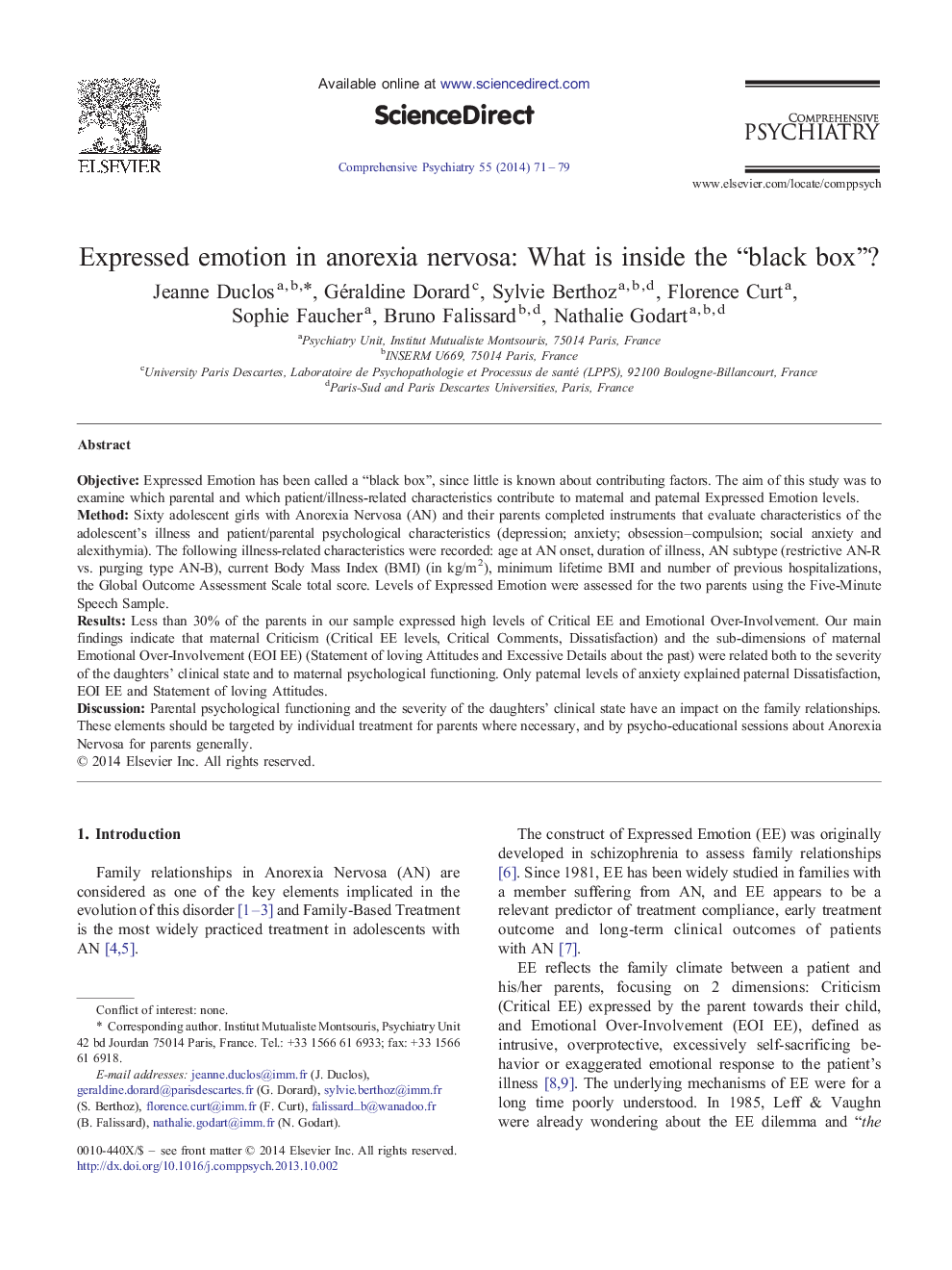| Article ID | Journal | Published Year | Pages | File Type |
|---|---|---|---|---|
| 317577 | Comprehensive Psychiatry | 2014 | 9 Pages |
ObjectiveExpressed Emotion has been called a “black box”, since little is known about contributing factors. The aim of this study was to examine which parental and which patient/illness-related characteristics contribute to maternal and paternal Expressed Emotion levels.MethodSixty adolescent girls with Anorexia Nervosa (AN) and their parents completed instruments that evaluate characteristics of the adolescent's illness and patient/parental psychological characteristics (depression; anxiety; obsession–compulsion; social anxiety and alexithymia). The following illness-related characteristics were recorded: age at AN onset, duration of illness, AN subtype (restrictive AN-R vs. purging type AN-B), current Body Mass Index (BMI) (in kg/m2), minimum lifetime BMI and number of previous hospitalizations, the Global Outcome Assessment Scale total score. Levels of Expressed Emotion were assessed for the two parents using the Five-Minute Speech Sample.ResultsLess than 30% of the parents in our sample expressed high levels of Critical EE and Emotional Over-Involvement. Our main findings indicate that maternal Criticism (Critical EE levels, Critical Comments, Dissatisfaction) and the sub-dimensions of maternal Emotional Over-Involvement (EOI EE) (Statement of loving Attitudes and Excessive Details about the past) were related both to the severity of the daughters' clinical state and to maternal psychological functioning. Only paternal levels of anxiety explained paternal Dissatisfaction, EOI EE and Statement of loving Attitudes.DiscussionParental psychological functioning and the severity of the daughters' clinical state have an impact on the family relationships. These elements should be targeted by individual treatment for parents where necessary, and by psycho-educational sessions about Anorexia Nervosa for parents generally.
